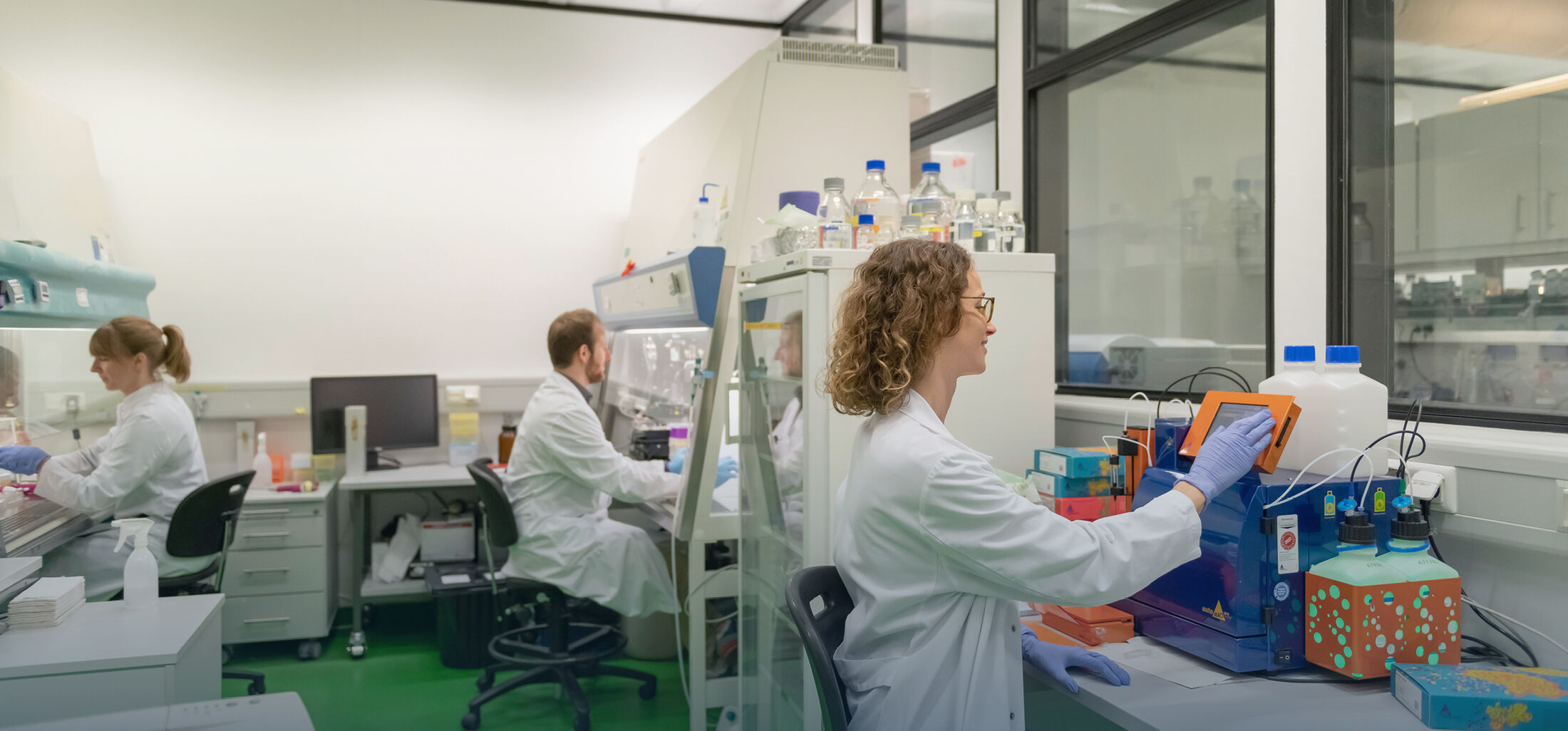Research
The Schneider lab is located at Erasmus MC at the Department of Developmental Biology, Rotterdam, the Netherlands and at the IBMT, Department of Cell Biology, Uniklink RWTH Aachen (schneiderlab.org).
Our research and expertise
The primary focus of the lab is disease-oriented laboratory investigation of clonal myeloid neoplasms, employing a range of genomic technologies as well as classical cellular and molecular biology experimental approaches.
Our mission
We aim to dissect mechanisms in the regulation of the hematopoietic stem cell in myeloid malignancies. It is a major goal of our lab to identify novel therapeutic targets to specifically eliminate the disease initiating cells and their supporting environment
- In vivo studies & translation
We are using various transgenic mouse models for disease modeling and genetic fate tracing and validate findings in human tissue and blood samples
- Genomics & proteomics
We are performing various single cell genomic technologies and proteomics to understand cell-fate in disease, heterogeneity and cross-talk with the ultimate goal to identify novel biomarkers and therapeutic targets. - CRISPR CAS9 Gene Editing
We use in vitro and in vivo CRISPR/Cas9 gene editing to validate pathways and therapeutic targets - 3D cell-culture modeling & stem cells
We are working with 3D cell culture models of human and mouse cells for disease modeling, target validation and compound screening
Projects
Cellular key drivers of bone marrow fibrosis
Bone marrow (BM) fibrosis is the continuous replacement of blood forming cells in the bone marrow by scar tissue, ultimately leading to failure of the body to produce blood cells. Primary myelofibrosis (PMF), an incurable blood cancer, is the prototypic example of the step-wise development of BM fibrosis. The specific mechanisms that cause BM fibrosis are not understood, in particular as the cells driving fibrosis remained obscure for a long time.
Our findings demonstrate that Gli1+ cells are fibrosis-driving cells in BM fibrosis, that their frequency correlates with fibrosis severity in patients, and that their ablation ameliorates BM fibrosis. These results indicate that Gli1+ cells are the primary effector cells in BM fibrosis and that they represent a highly attractive therapeutic target (Schneider et al. Cell Stem Cell 2017).
In our most recent work we generated a comprehensive map of the stroma in MPNs/MFs on a single-cell level in murine models and patient samples. Our analysis revealed two distinct mesenchymal stromal cell (MSC) subsets as pro-fibrotic cells. MSCs were functionally reprogrammed in a stage-dependent manner with loss of their progenitor status and initiation of differentiation in the pre-fibrotic and acquisition of a pro-fibrotic and inflammatory phenotype in the fibrotic stage. The expression of the alarmin complex S100A8/S100A9 in MSC marked disease progression toward the fibrotic phase in murine models and in patient stroma and plasma. Tasquinimod, a small-molecule inhibiting S100A8/S100A9 signaling, significantly ameliorated the MPN phenotype and fibrosis in JAK2V617F-mutated murine models, highlighting that S100A8/S100A9 is an attractive therapeutic target in MPNs.
We will apply state-of-the-art techniques to unravel the complex molecular and cellular interaction between fibrosis-causing cells and the malignant hematopoietic cells to ultimately develop novel targeted therapies with curative intentions.
Regulation of the hematopoietic stem cell in Del(5q) MDS
Del(5q) myelodysplastic syndrome (MDS) is a clonal disorder of hematopoiesis arising in a hematopoietic stem cell (HSC). In this disease, HSC acquire a deletion of one copy of the long arm of chromosome 5 (i.e. haploinsufficiency of 5q). Our previous studies have shown that the gene dosage effect of haploinsufficiency can be targeted therapeutically, demonstrating an approach for targeting of heterozygous deletions in cancer (Schneider et al. Cancer Cell 2014). In ongoing work, we aim to dissect the role of Wnt signaling as an intrinsic mechanism and inflammation as an extrinsic mechanism in the pathogenesis of del(5q) MDS
Inflammation and Myeloid Malignancies
Our recent data identified an unexpected link between haploinsufficiency for genes on Chromosome 5, activation of the innate immune system and myelodysplasia. The activation of the innate immune system was associated with consecutive inflammation in the bone marrow niche and senescence of hematopoietic cells. Our findings underscore a molecular link between the genetic abnormalities in MDS patients, activation of the innate immune system, and ineffective hematopoiesis that characterizes the disease (Schneider et al. Nature Medicine 2016).
We further demonstrated that inflammation is also a key driver in myeloproliferative neoplasms and their progression to bone marrow fibrosis (Gleitz et al. Blood 2020).
In our current research we aim to unravel the role of inflammation in the initiation, clonal selection and progression of myeloid malignancies.















